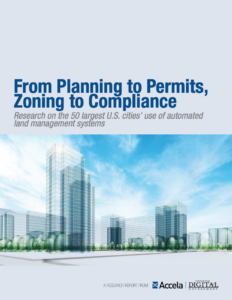
Ask any contractor, and they’ll probably agree. The planning and permitting portion of a land management project has historically been a complex and time-consuming venture, riddled with inefficiency, manual processes and long waits for approval.
For the average citizen (a.k.a. not an experienced contractor) trying to DIY a building project, it can be an even greater frustration. For the employees of city planning and other departments responsible for things like permitting, zoning and compliance, the sentiment is the same. Manual work, inefficient workflows and tedious processes keep governments from realizing cost efficiencies and best serving constituents.
Fortunately, technology has helped eliminate inefficiency as cities adopt automated systems to streamline planning and development, simplify the permit process, enable
contractors and builders to access forms online, and more. Web-based one-stopbusiness portals and mobile access have further helped transform planning departments from complex bureaucracies to citizen-focused centers of convenience.
The technology, referred to as land management systems, is important as the systems
directly impact everyday citizens and also affect revenue generated via land management activities. Because of this, it is critical for governments to invest in proven platforms with trusted vendors that have the capacity to deliver on large, high-stakes projects.
In this research report, see below, Accela and the Center for Digital Government provide detailed information regarding the 50 largest U.S. cities’ choices in land management systems. The purpose of this document is to provide municipalities with information regarding the choices their peers in land management technology investments.



